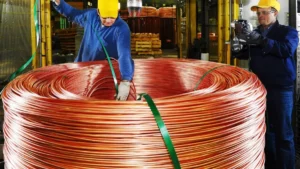Anglo American reported a 6% drop in its 2023 copper output, totaling 229,900 tons, significantly impacted by a 16% decrease in Chile.
The dip in Chile’s output to 136,200 tons was mainly from lower ore grades and volumes at Los Bronces and El Soldado, though Collahuasi saw a 14% increase due to better ore grades.
Los Bronces faced a 32% production fall, hitting 57,200 tons because of tougher ore and reduced processing.
This trend is expected to persist until a new mine phase begins in early 2027, promising higher grades and softer minerals.
El Soldado saw a 52% reduction to 7,300 tons, affected by a revised mining plan and a geotechnical issue.

Meanwhile, Collahuasi’s production rose to 71,700 tons, helped by a new ball mill and improved ore grades.
The 2023 copper price averaged 384 c/lb, with future production estimates holding steady at 730,000–790,000 tons for 2024.
Chile’s output hinges on water availability, while Peru’s focus shifts to the year’s latter half due to mining adjustments.
This situation underscores the challenges and strategic responses in global copper mining, reflecting industry adaptability and resource management.
Background
The decline in Anglo American’s copper production in Chile highlights broader industry challenges, such as fluctuating ore grades and environmental constraints.
Historically, Chile has been a copper powerhouse, but aging mines and geological complexities increasingly affect output.
The contrast with Collahuasi’s success underscores the variance in mining conditions across sites.
Production shift responds to rising global copper demand, fueled by electric vehicle manufacturing and renewable energy projects.
The strategic importance of maintaining and enhancing copper supply chains has never been more evident.

